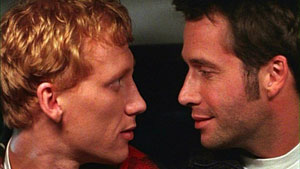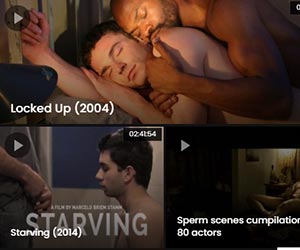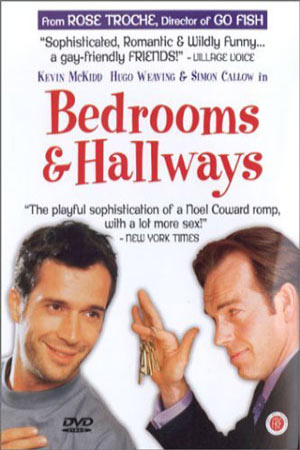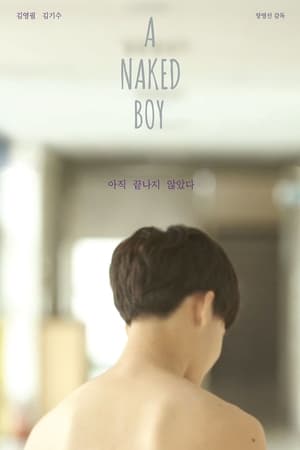Bedrooms & Hallways (1998) is a delightful and bold comedy that dives deep into the fluidity of sexual identity and modern relationships. Directed by Rose Troche, best known for her no-budget lesbian comedy Go Fish (1994), the film represents a significant leap forward in terms of craft, style, and commercial viability for the director. It tells the story of disillusioned and single Leo (Kevin McKidd), who, after giving up on his social life, is coaxed by his eccentric flatmate Darren (Tom Hollander) and supportive neighbor Angie (Julie Graham) to re-enter the dating scene. Leo’s mundane existence takes a turn when his friend Adam (Christopher Fulford) convinces him to join a men’s therapy group run by the eccentric New Age guru Keith (Simon Callow).
At the group, Leo meets Brendan (James Purefoy), a seemingly straight Irishman whose dark good looks and smooth voice captivate him. As Leo opens up about his attraction to Brendan during a group session, Brendan, on the rebound from a relationship with his business partner Sally (Jennifer Ehle), is flattered and curious. Soon, their attraction grows, and what begins as a boy-meets-boy comedy quickly becomes more complicated when Sally, Leo’s high school sweetheart, re-enters his life.
 The film doesn’t focus on defining sexual orientation in rigid terms, and instead, it explores the concept of sexual fluidity. As Leo and Brendan seamlessly move between same-sex and opposite-sex relationships, the story underscores the idea that love and attraction are fluid and unpredictable. This inclusive approach to sexuality not only appeals to the LGBTQ+ community but also to a broader, more progressive urban audience.
The film doesn’t focus on defining sexual orientation in rigid terms, and instead, it explores the concept of sexual fluidity. As Leo and Brendan seamlessly move between same-sex and opposite-sex relationships, the story underscores the idea that love and attraction are fluid and unpredictable. This inclusive approach to sexuality not only appeals to the LGBTQ+ community but also to a broader, more progressive urban audience.
The cast is uniformly strong, with Kevin McKidd and James Purefoy making a charming and believable pair. McKidd, best known at the time for his role as Tommy in Trainspotting, brings an endearing vulnerability to Leo, while Purefoy’s portrayal of the conflicted Brendan adds depth to his character. Jennifer Ehle shines as Sally, bringing natural warmth and charisma to her role. Simon Callow and Harriet Walter bring comic flair to their quirky characters, whose eccentricity stands out in a London context.
However, Tom Hollander’s Darren is arguably the highlight of the film. Hollander injects humor and energy into every scene, with his flamboyant wardrobe and impish charm, especially during his sex scenes. His character serves as a comic relief, particularly in moments when the script slows down.
While the film’s humor is not as zippy as it could be, and some lulls occur after the breezy, fast-paced opening, Bedrooms & Hallways remains entertaining thanks to its strong cast and engaging characters. Troche’s growth as a filmmaker is evident, as she moves beyond the rawness of Go Fish to deliver a visually polished and sophisticated film. Cinematographer Ashley Rowe’s warm lighting and mobile camerawork, combined with Richard Bridgland’s colorful production design and Annie Symons’ bold costumes, create a vibrant, visually appealing atmosphere.
In the end, Bedrooms & Hallways is a witty and heartwarming exploration of modern relationships and sexual identity. The film’s inclusive approach and Troche’s improved craftsmanship make it an engaging and unique comedy that resonates with audiences long after the credits roll. Though not without its flaws, it offers a refreshingly open-minded take on the fluidity of love, passion, and connection.



























